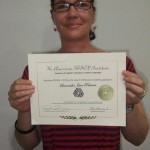In the world of TESOL (Teaching English to Speakers of Other Languages), keeping students engaged and motivated can sometimes be a challenge—especially in an online or hybrid environment. One powerful strategy to boost engagement is flipping the classroom, a method that encourages students to take an active role in their learning by moving traditional homework tasks into class time and vice versa. The goal is to allow students to explore content independently at their own pace, then engage in interactive, communicative tasks during live sessions. Here’s how TESOL teachers can flip the script on learning and incorporate engaging online resources into their lessons.
1. What is Flipping the Classroom?
The flipped classroom model reverses the traditional order of teaching. In this approach:
- Students first explore learning materials at home (videos, readings, online exercises).
- Class time is used for discussion, problem-solving, and application, rather than for direct instruction.
For TESOL students, this method can be particularly effective, as it encourages more student-centered learning, provides more opportunities for language practice, and increases engagement during live sessions.
2. Online Tools and Resources to Flip Your TESOL Classroom
Here are some online tools and tips to help you successfully flip your classroom:
a) Video Lessons
Using videos to introduce topics, grammar rules, or vocabulary is an excellent way for students to absorb content at their own pace. You can create your own or use pre-made materials.
- YouTube: There are many educational channels dedicated to teaching English. Teachers can curate playlists or use tutorials to cover key language concepts.
- Tip: Create comprehension questions or exercises to accompany the videos. Students can submit these responses before class for evaluation or discussion.
- EdPuzzle: This platform allows you to embed interactive questions within your video lessons, ensuring students stay engaged and comprehend the material as they watch.
- Tip: Use EdPuzzle to track student progress and understanding, giving you insights to tailor your live class activities.
b) Interactive Online Tools
In a flipped TESOL classroom, class time should focus on interactive language use and communicative activities. Leverage these tools to boost interaction and engagement:
- Kahoot!: Create quizzes, vocabulary reviews, or grammar challenges. Kahoot! makes it easy to engage students in competitive yet educational games that reinforce the concepts they studied at home.
- Tip: End every flipped class with a Kahoot! game to review the material and assess student understanding in a fun way.
- Quizlet: Perfect for vocabulary learning, Quizlet lets students practice at home through flashcards and games. In-class, you can use Quizlet Live, which fosters collaboration and communication among students.
- Tip: Ask students to create their own sets of flashcards based on the pre-class materials and present them to the group.
c) Discussion Platforms
Flipping the classroom works best when students can interact with the material before class and come prepared to participate. Use discussion boards to start conversations ahead of live sessions.
- Padlet: This online notice board allows students to post their thoughts, questions, and ideas about a topic. It’s a great way to start discussions before class time and gives you a gauge of student readiness.
- Tip: Set a weekly discussion topic based on the at-home material. For example, after watching a video on past tense verbs, students can share sentences using the past tense.
- Google Classroom: Create assignments, give feedback, and facilitate discussions. Students can upload work or respond to questions based on what they’ve learned outside of class.
- Tip: Use Google Classroom to create an ongoing conversation about the week’s topic and encourage peer feedback.
3. Flipping the Classroom with a Lesson Plan
To help you get started, here’s a basic flipped classroom lesson structure for a TESOL class:
Pre-Class Work (Home Learning)
- Topic: Past Simple Tense
- Task: Watch a YouTube video explaining past simple tense rules, and take notes on key points.
- Homework: Complete a short Quizlet activity on 10 irregular past tense verbs.
In-Class Activities (Engaged Learning)
- Warm-up: Review with a short Kahoot! quiz to test comprehension of the video content.
- Interactive Activity: In pairs, students create and act out short dialogues using the past tense verbs they learned, focusing on communication and correct usage.
- Discussion: Use Padlet to have students share one personal experience using past tense. Review and discuss them in class.
This model ensures that students are exposed to the material before class, which leaves more time for communication practice and interactive activities during live sessions.
4. Benefits of the Flipped Classroom for TESOL Learners
Flipping the classroom can have several advantages for TESOL students:
- More Practice Time: By covering theory at home, students have more time to practice speaking, listening, and interacting with their classmates in class.
- Self-Paced Learning: Students can take their time with difficult concepts by replaying videos or re-reading materials before the live session.
- Better Engagement: Class time becomes a collaborative and dynamic environment where students apply what they’ve learned, making language learning more engaging and effective.
5. Additional Resources to Explore
Here are some platforms to help you continue flipping your TESOL classroom:
- Google Trends: trends.google.com – Stay updated on trending topics and ideas that you can incorporate into your flipped classroom for engaging lessons.
- X Trends: x.com/explore – Explore current events and global discussions, which can provide fresh, relevant content for your lessons.
- Flipgrid: flipgrid.com – A free platform where students can record short videos to share their thoughts, allowing them to practice speaking in a low-pressure environment.
Conclusion
Flipping the classroom is a proven strategy that encourages students to take responsibility for their own learning while making class time more interactive and meaningful. By leveraging online tools and resources such as videos, quizzes, and discussion platforms, TESOL teachers can create a dynamic and engaging learning environment. It’s time to flip the script on learning—let your students explore English in new, exciting ways while you guide them toward success.



